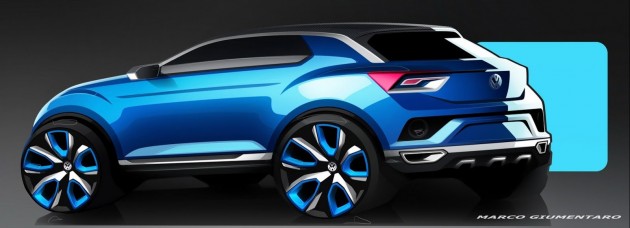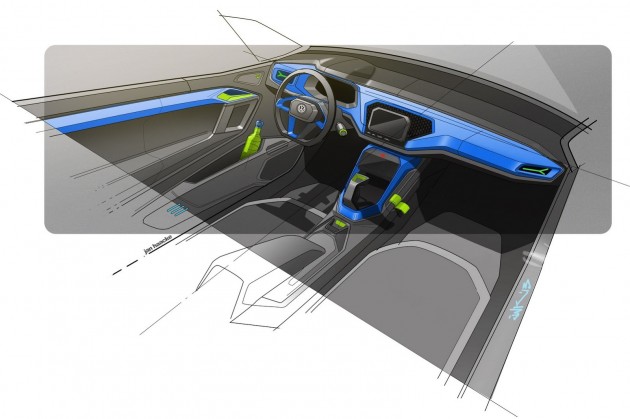
Heading to the 2014 Geneva Motor Show, this Volkswagen T-ROC joins Wolfsburg's fleet of SUV concepts, such as the Taigun, CrossBlue, CrossBlue Coupe and Cross Coupe. But while the rest are all closely production-bound, the T-ROC simply previews the styling direction of future VW off-roaders.
The "T" in T-ROC is a reference to the nomenclature of current Volkswagen SUVs such as the Tiguan and Touareg, while the "ROC" is there because apparently, the high-riding two-door doesn't shy away from rocks. No, we're not making any of this up – this is VW's own explanation.
Measuring 4,179 mm-long and with a 2,595 mm wheelbase, the MQB-based T-ROC features short overhangs, giving it a sporty look from all angles. The styling is all new to Volkswagen, with plenty of LED illumination both front and back, and is said to be the advancement of the brand's SUV DNA.

The round lighting modules, which take inspiration from the Volkswagen Karmann Ghia Type 34, house both the headlights and fog lamps plus swivelling spotlights and cameras too. The last two follows the angle of the front wheels and sends a feed of the surroundings to a display on the dashboard.
There are power LEDs and cameras round the back too, if you fancy some midnight off-road adventure. Another interesting feature are the removable roof halves, which can be stored in the boot to offer a convertible-like experience.
Inside, the interior is a mix of blue and black; the latter colour named 'Adamantium Dark'. The dash-mounted touch-screen display is conceptualised as a portable tablet, sitting above the digital climate control pad. Also on the digital route is the instrument cluster, which uses a 12.2-inch colour display like in the next Audi TT.

Powering the thick-set 19-inch wheels is the Golf GTD's 184 PS/380 Nm 2.0 litre turbodiesel engine, working through a seven-speed DSG dual-clutch transmission and a Haldex 4MOTION all-wheel drive system. The drivetrain has three driver-selecable driving models: Street, Offroad and Snow.
The Volkswagen T-ROC can get to 100 km/h in 6.9 seconds, on the way to its 210 km/h top speed. Weighing a relatively light 1,420 kg helps it maintain a combined fuel efficiency figure of 4.9 litres per 100 km (20.4 km per litre).
Now this is a future we can all live with, don't you agree?



No comments:
Post a Comment